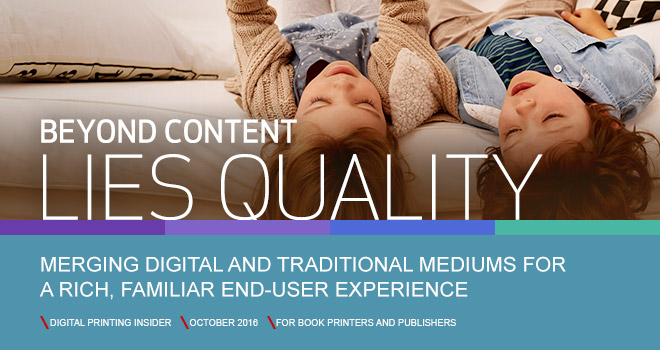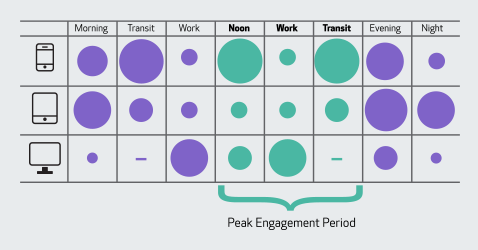Delivering Content in a Multi-Channel World
Businesses of all sizes are developing printed and digital content to reach, engage, and influence customers. Many organizations are offering content marketing pieces through digital publications for smartphones and tablets. Digital publishing platforms enable publishers and marketers to create a very rich content experience in a style that is familiar yet completely interactive for the end-user.
“Today’s marketers are tasked with developing the right content to credibly engage decision-makers, attract new prospects and position themselves as thought leaders.”
Barb Pellow, InfoTrends
According to a report entitled 2015 B2B Content Marketing Trends—North America by the Content Marketing Institute/MarketingProfs, 86% of business-to-business (B2B) marketers are currently using content marketing. Furthermore, the most effective B2B marketers are allocating 37% of their total marketing budgets to content marketing. These marketers understand that B2B buyers want to obtain as much information as possible before they make a purchasing decision, and content marketing is key to delivering that information.
In the Canon Solutions America sponsored webinar entitled Delivering Content in a Multi-Channel World presented by Printing Impressions and Book Business magazines, InfoTrends Group Director Barb Pellow states, “Today’s savvy marketers want to implement strategies that will generate growth for their businesses. They want to understand how they can use content more effectively to save money and increase profitability.” Today’s marketers are tasked with developing the right content to credibly engage decision-makers, attract new prospects, and position themselves as thought leaders. In addition, all of this content must be accessible anywhere, anytime to reach today’s on-the-go consumers. Many marketers have discovered that cross-media communications spanning print, online, and mobile are the answer.
In this webinar, Pellow shares industry data on book publishing trends and the drive towards digital content. She notes, “Book publishers in particular are seeing a dramatic shift as more and more consumers are reading books on digital devices. Meanwhile, marketing departments are embracing digital to enable more sales, support training, deliver information across a variety of channels, and produce multi-channel publications.” Pellow goes on to discuss the functions and benefits of digital publishing platforms in today’s marketplace. Featured alongside Pellow is Paul DeHart, Co-Owner, President, and CEO of BlueToad, a digital publishing software vendor. As a market influencer, DeHart provides insights on the adoption of mobile in the publishing landscape, the consumption patterns of users, and the basics of an effective digital publishing strategy.
According to DeHart, there are four components of consumption—content, reach, promotion, and analysis. He asserts, “Ensuring that the reading experience is consistent and reliable across as many platforms as possible will enable you to leverage your content through social media, emails, smartphones, tablets, game consoles, and a variety of other mechanisms. You can’t just assume that people will find the digital version of your content—you must lead them to it.”
For those who are interested in taking the plunge, DeHart, recommends a “zero entry pool” strategy, which involves easing your way into digital rather than diving into the deep end right away. This is particularly important for smaller publishers that may not have the resources to fully engage in a digital strategy from the start. By starting small, you can fine-tune your efforts and increase your effectiveness over time.
Watch this free webinar to learn more about digital publishing for cross-channel media consumption from Pellow and DeHart. You will also hear a firsthand account and case study from Carlos Bernal, Director of Marketing at Accu-Time Systems (a BlueToad customer). Accu-Time’s investment in the BlueToad publishing solution proved to be an affordable and efficient way to deliver information to readers, increase revenues, and deliver content through various media channels.

